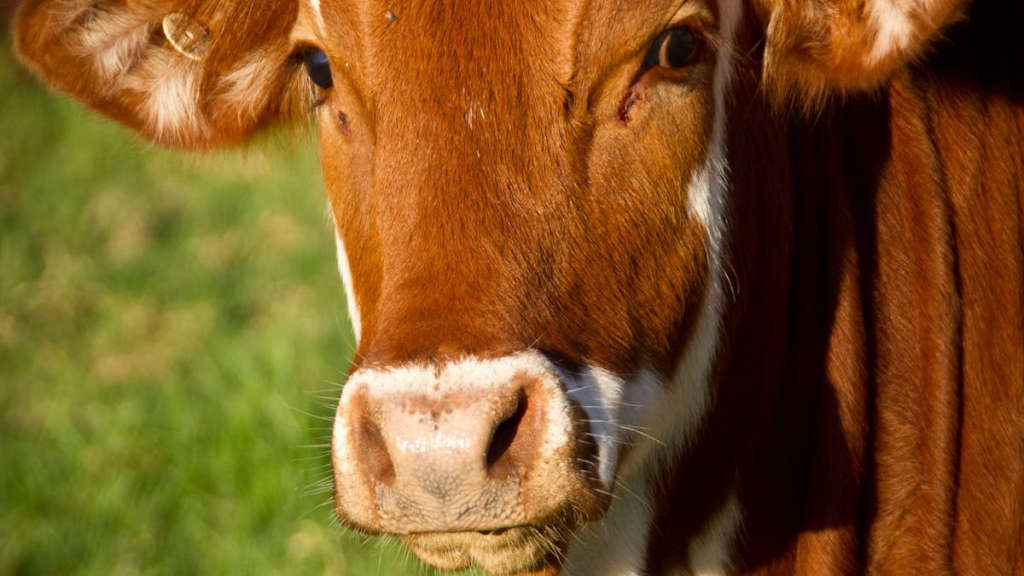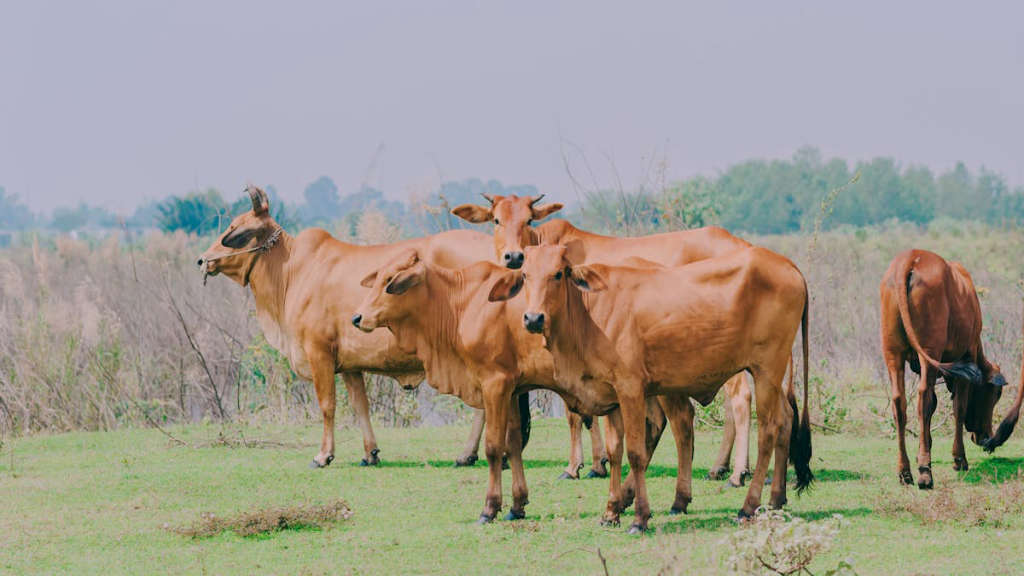When it comes to the world of beef, enthusiasts often deliberate over the superior cut. Today, we’ll explore the culinary showdown between two popular breeds: the Piedmontese beef and Angus. Each has its unique characteristics and flavors, which can tantalize the taste buds in distinct ways. As we dive into this meaty debate, we’ll examine their distinct qualities and help you decide which one deserves a spot on your plate.
Main Points
- Overview of Piedmontese beef characteristics.
- Insight into Angus beef and its distinct advantages.
- Taste and texture comparisons between the two breeds.
- Suggestions for preparing each type of beef.

The Culinary Merits of Piedmontese Beef: Unveiling Its Unique Flavor Profile
When it comes to gourmet beef, few cuts can compare to the rich and robust characteristics of Piedmontese beef. Hailing from the picturesque region of Piedmont in Northern Italy, this unique breed of cattle, known as the Piemontese, offers a culinary experience that transcends the ordinary. The flavor profile of this exceptional beef is the result of a combination of genetics, diet, and traditional farming methods. Each element plays a pivotal role in shaping the meat’s distinctive qualities.
The Breeding and Rearing of Piemontese Cattle
To fully appreciate Piedmontese beef, one must understand the breeding practices that contribute to its unparalleled taste. Piemontese cattle are specially bred for their muscular build and lower fat content. This unique combination not only produces leaner cuts but also enhances the meat’s natural flavor. Their diet primarily consists of fresh forage and grains, which significantly influences the quality of the beef.
- Genetics: The genetic makeup of Piemontese cattle leads to a higher proportion of muscle to fat. This results in meat that is not only tender but also boasts an authentic beef flavor.
- Diet: Grazing on the lush pastures of Piedmont, these cattle consume a diverse range of grasses and herbs, imparting a complex flavor that is hard to replicate.
- Farming Techniques: Traditional rearing practices are adhered to, ensuring that the cattle are raised in a natural environment, further enhancing the quality of the meat.
The Flavor Profile of Piedmontese Beef
The flavor profile of Piedmontese beef is nothing short of remarkable. Diners often describe it as having a nutty, buttery taste, a signature characteristic that sets it apart from other beef varieties. The meat’s tenderness is a delightful surprise, as it retains a juicy texture that melts in your mouth. This unique combination of flavor and tenderness has made Piedmontese beef a favorite among chefs and food enthusiasts alike.
Moreover, the marbling in Piedmontese beef, while subtler than in more heavily marbled breeds, still contributes to a rich flavor that enhances any dish it graces. Whether grilled, slow-cooked, or served as a steak tartare, the meat invariably shines through, providing an unforgettable dining experience.
While Piedmontese beef can undoubtedly stand alone, pairing it with the right accompaniments can elevate the meal to new heights. It pairs exceptionally well with:
- Red wines: Full-bodied reds, such as Barolo or Barbaresco, complement the robust flavors of the beef.
- Herbs: Fresh herbs like rosemary and thyme enhance the beef’s natural taste without overpowering it.
- Seasonal vegetables: Grilled or roasted veggies add a refreshing contrast to the rich meat.
In conclusion, Piedmontese beef stands out as a culinary treasure, offering a unique flavor profile that is a result of thoughtful breeding and traditional farming practices. Whether you’re a seasoned chef or a culinary novice, incorporating this exquisite beef into your repertoire promises to deliver memorable dining experiences. Embrace the qualities of Piedmontese beef, and you may just discover a newfound appreciation for the art of good cooking.

Comparative Analysis: Angus Beef’s Versatility and Market Demand
In recent years, the popularity of Angus beef has surged, captivating the attention of chefs, consumers, and meat connoisseurs alike. This particular breed of cattle, renowned for its unique marbling and rich flavor, has established itself as a versatile choice that caters to various culinary preferences. Understanding why Angus beef stands out in the marketplace requires a deeper dive into its characteristics, production methods, and the evolving trends within the consumer landscape.
The Unique Attributes of Angus Beef
One of the primary factors contributing to the appeal of Angus beef lies in its quality. Angus cattle are known for their exceptional fat distribution, which results in tender meat that is bursting with flavor. This marbling creates a juicy texture that enhances the dining experience, making it a favorite for gourmet dishes and casual cooking alike. Additionally, Angus is often associated with high-grade beef, such as USDA Prime, elevating its status in both restaurants and grocery stores.
Market Demand Trends
The demand for Angus beef is also influenced by evolving consumer preferences. As more individuals lean towards healthy eating and quality sourcing, the desire for premium beef options has intensified. Moreover, there’s a noticeable shift towards responsible and sustainable farming practices. Angus beef is often marketed as a product that meets these standards, appealing to environmentally conscious consumers who wish to make ethical choices. This intersection of quality and responsibility not only boosts market demand but also promotes consumer loyalty.
| Factors | Angus Beef | Other Beef Varieties |
|---|---|---|
| Marbling | Excellent | Varies |
| Flavor | Rich and Robust | Mild |
| Consumer Preference | High | Moderate |
The Culinary Versatility of Angus Beef
Furthermore, the versatility of Angus beef cannot be overlooked. From classic steaks to ground beef, its applications in both traditional and innovative recipes are profound. Chefs around the globe are harnessing the unique flavors of Angus in various cuisines, creating diverse and delectable offerings. However, this versatility also introduces a layer of complexity—how does one choose the right cut for a specific dish? For instance, some may argue that while ribeye is perfect for grilling, sirloin may serve better in stir-fries. Such decisions can lead to some confusion, yet they also invite experimentation in the kitchen.
The Future of Angus Beef in the Market
As we look ahead, the future of Angus beef appears bright but not without its challenges. Competition in the beef sector is fierce, with many producers striving to capture the same niche market. Additionally, fluctuations in consumer preferences and economic factors may introduce uncertainties. Nonetheless, Angus beef continues to adapt, embodying qualities that resonate well with today’s discerning consumers. It represents a blend of tradition and modernity, offering both an exceptional eating experience and a narrative of sustainable practices.
In conclusion, the comparative analysis of Angus beef reveals its unique position in the market—characterized by quality, demand, and versatility. As consumer trends continue to evolve, so too will the strategies employed by producers to ensure that Angus remains at the forefront of culinary excellence.

Nutritional Benefits and Cooking Techniques: Making the Most of Each Breed
When it comes to exploring the various breeds of livestock, understanding their unique nutritional benefits can significantly enhance our culinary choices. Each breed carries distinct characteristics that contribute to its flavor profile and nutritional content. For example, grass-fed beef offers a higher omega-3 fatty acid content compared to grain-fed varieties, which may be beneficial for heart health. Thus, when we consider our meals, it’s vital to take into account not only the region from where the animal originates but also its rearing practices. This knowledge empowers us as consumers to make informed decisions.
The Nutritional Benefits of Different Breeds
Let’s dive deeper into specific breeds. Take the Highland cattle, for instance. Known for their rich, grassy pastures in Scotland, the meat from these animals is remarkably tender and marbled. Highland beef’s fat content not only gives it an exceptional flavor but also increases its nutritional value by providing essential vitamins and minerals. On the opposite side of the spectrum, we have the modern industrial breeds, which often prioritize yield. While these animals can produce substantial quantities, the nutritional profile may not be as rich or complex.
Moving on to pig breeds, we encounter the famous Berkshire pigs, revered for their juicy, flavorful meat. Berkshire pork is rich in monounsaturated fats, making it not just delectable but also a nutritious choice. This breed’s natural marbling offers a succulence that elevates any dish. When preparing Berkshire pork, slow cooking techniques often yield the best results, allowing that inherent flavor to shine while maintaining tenderness.
Cooking Techniques to Highlight Nutritional Benefits
Understanding nutritional benefits also leads us to effective cooking techniques. For instance, utilizing methods such as sous-vide or slow-roasting can enhance the flavor of naturally rich meats while ensuring their nutritional integrity is preserved. These techniques allow even tougher cuts to become tender and flavorful, showcasing the breed’s unique qualities. Additionally, marinating meats from various breeds can also promote tenderness and enhance taste, utilizing acidic components like vinegar or citrus to break down tough fibers.
However, it’s important to avoid overcooking, which can lead to losing essential nutrients and drying out the meat. A delicate balance between cooking time and temperature is key to reveling in the full experience that each breed offers. Incorporating herbs and spices that align with the meat’s profile can also elevate the overall dish, bridging flavors and nutritional qualities.
In conclusion, appreciating the nutritional benefits of different breeds and mastering suitable cooking techniques is crucial for anyone looking to optimize their dietary choices. As we continue to discover and experiment in our kitchens, let’s remember that each breed represents a unique culinary journey, deserving of our attention and respect. Eating well is about savoring the subtle complexities each breed has to offer, reminding us that food is not just sustenance but a celebration of the diverse world we inhabit.
Conclusion
In summary, the comparison between Piedmontese beef and Angus reveals a captivating journey into the world of flavors and textures. Each type of beef brings its own unique characteristics to the table, appealing to different preferences and culinary styles. Piedmontese beef, known for its tenderness and leanness, often wins over those seeking a healthier option without sacrificing taste. On the other hand, Angus beef, with its rich marbling and robust flavor, tends to satisfy those desiring a more traditional, indulgent steak experience. Ultimately, the choice between these two remarkable breeds hinges on personal tastes and culinary goals. Regardless of which one you choose, exploring both options enriches our appreciation for quality beef, inviting us to savor the nuances each brings to our plates.
Frequently Asked Questions
What is the main difference between Piedmontese beef and Angus beef?
The main difference lies in their breed characteristics; Piedmontese beef is known for its leaner cuts and high protein content due to the breed’s unique muscle structure, while Angus beef is renowned for its marbling and rich flavor.
Is Piedmontese beef healthier than Angus beef?
Piedmontese beef is often considered healthier due to its lower fat content and higher protein levels, making it a great option for those looking for leaner meat. However, Angus beef also has its own benefits, particularly for flavor.
Which type of beef is better for grilling?
Both Piedmontese and Angus beef can be excellent for grilling, but Angus beef is typically favored for its marbling, which can enhance flavor and juiciness when cooked. Piedmontese beef can be grilled as well, providing a leaner option.